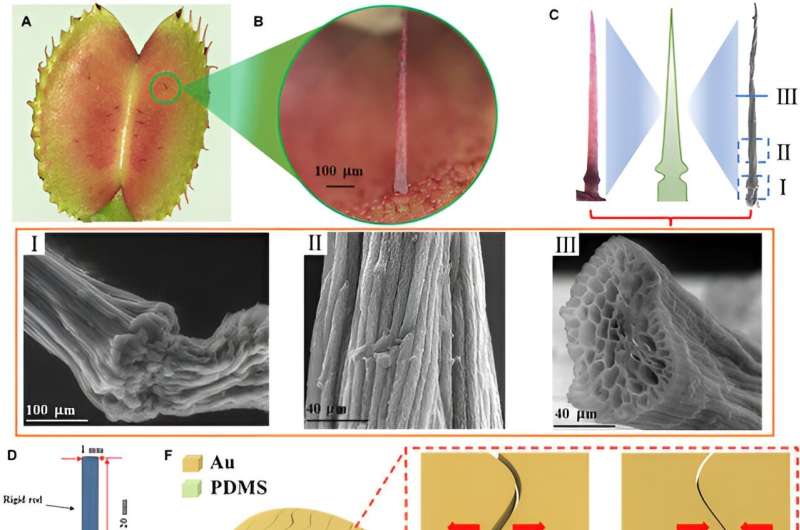
A study conducted by researchers at the Jiangsu Provincial Key Laboratory of Advanced Robotics, Soochow University, presents the development of a highly sensitive and responsive mechanosensor. This novel device is inspired by the ultrasensitive trigger hairs found in Venus flytraps, known for their rapid response to external stimuli. The study was published in the latest issue of Cyborg and Bionic Systems.
Led by Professor Kejun Wang, the team includes Qian Wang, Zezhong Lu, Deshan Wang, and other colleagues who collaborated to translate biological sensitivity into a mechanical form. Their work bridges the gap between the natural and the engineered, aiming to enhance robotic and sensor technology with biologically inspired insights.
The Venus flytrap's ability to detect minute forces through its trigger hairs has long fascinated scientists. By understanding and mimicking this natural mechanism, the Soochow University team has developed an artificial biomimetic trigger hair mechanoreceptor (BTHM). This sensor exhibits remarkable sensitivity and quick response times to various mechanical signals, including force, displacement, and vibrations.
The design of the BTHM integrates a rigid rod and a flexible base with a piezoresistor strategically placed on a notch structure, akin to the natural arrangement in Venus flytraps. This setup allows the sensor to perform with high efficiency and precision, detecting even the slightest environmental changes through mechanical deformation.
Experimental results have demonstrated the BTHM's capabilities in various applications, from environmental sensing to the detection of minute mechanical loads and vibrations. Its sensitivity is particularly notable in scenarios that require the detection of low-intensity signals, making it an ideal candidate for incorporation into advanced robotic systems and environmental monitoring devices.
The researchers' approach involves a detailed study of the structure and mechanics of the Venus flytrap's trigger hairs, followed by the application of these principles in the design of the BTHM. The sensor's performance was rigorously tested under controlled laboratory conditions, confirming its potential to outperform current technology in sensitivity, stability, and response time.
This innovative project not only showcases the potential of biomimetic research but also sets a new standard for mechanosensor technology. The findings from this study open up possibilities for enhancing robotic proprioceptive systems and developing more interactive and responsive machines.
As the global demand for sophisticated sensor technology grows, the work by Professor Wang and his team provides valuable insights and tools that could revolutionize various industries, including robotics, health care, and environmental monitoring.
More information: Qian Wang et al, Mechanosensor for Proprioception Inspired by Ultrasensitive Trigger Hairs of Venus Flytrap, Cyborg and Bionic Systems (2023). DOI: 10.34133/cbsystems.0065
Provided by Beijing Institute of Technology Press Co., Ltd
Citation: Researchers develop advanced mechanosensor inspired by Venus flytrap (2024, June 4) retrieved 4 June 2024 from https://techxplore.com/news/2024-06-advanced-mechanosensor-venus-flytrap.html
This document is subject to copyright. Apart from any fair dealing for the purpose of private study or research, no part may be reproduced without the written permission. The content is provided for information purposes only.
